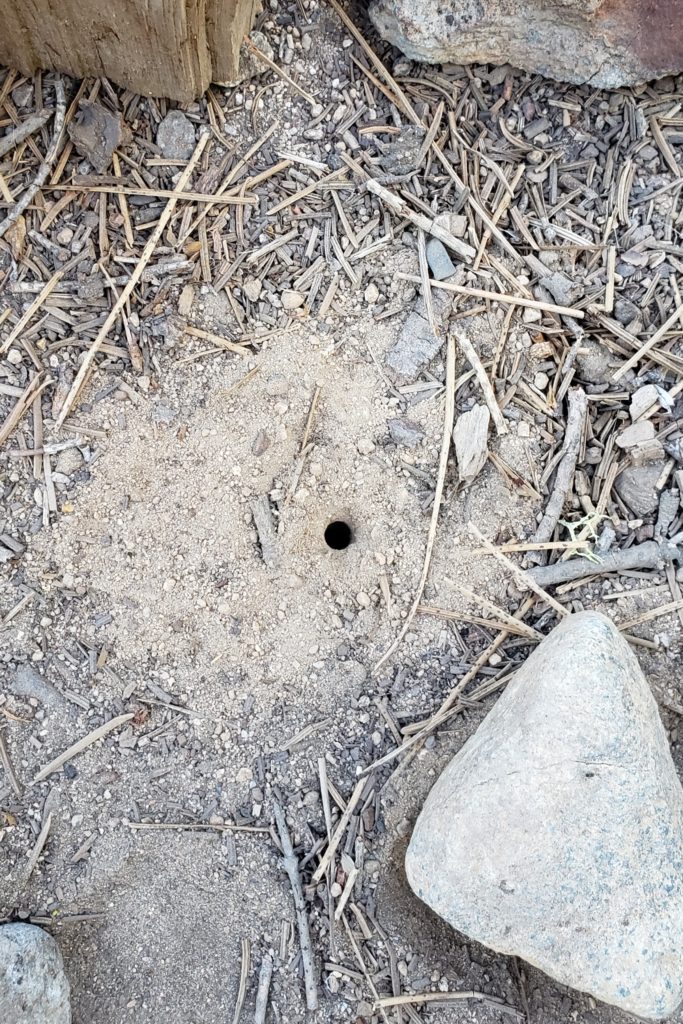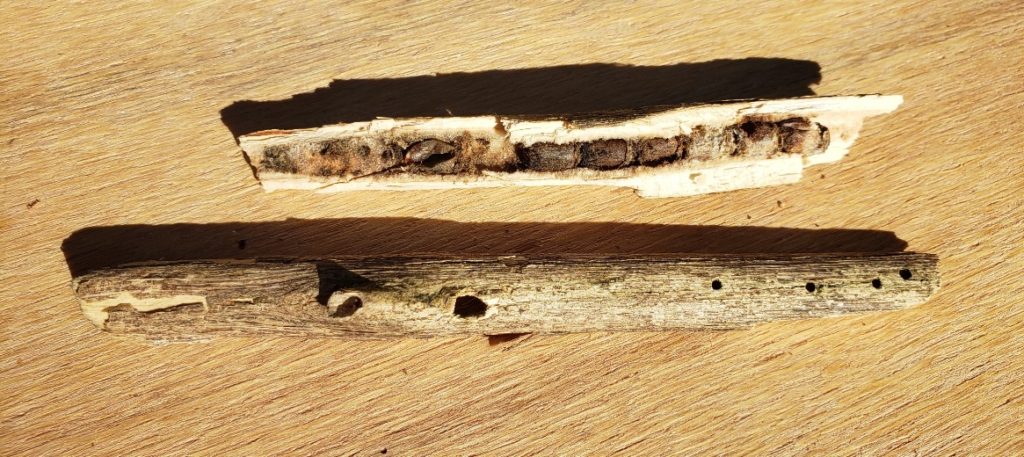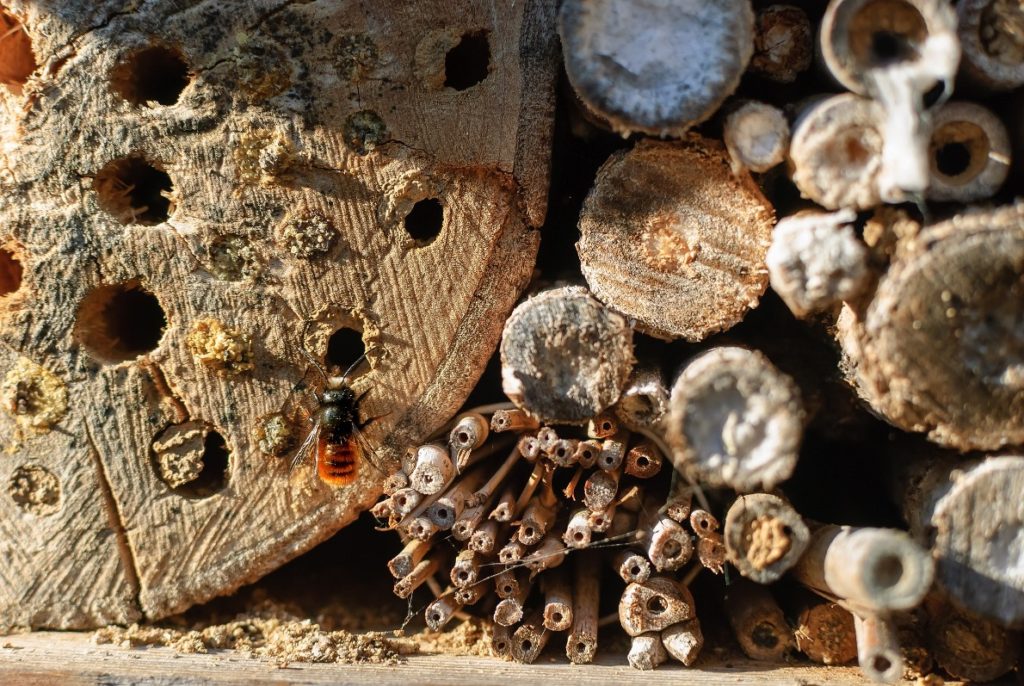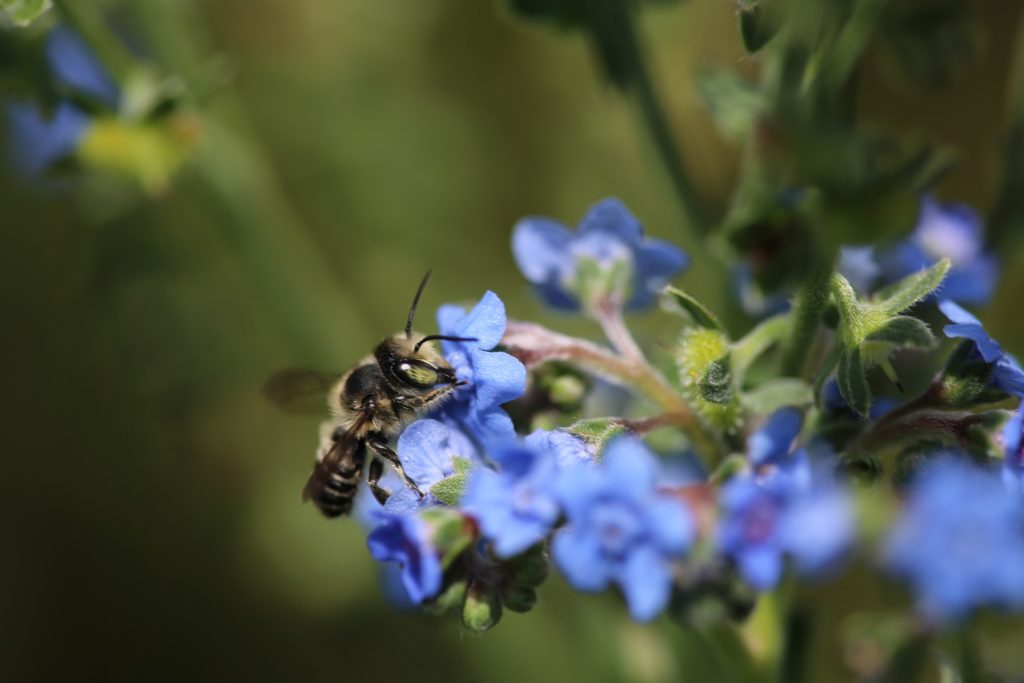By now, most of us are concerned about the decline of bees and other pollinators. But there’s a myriad of bees that are not honeybees and many are great pollinators. They are native bees, or wild bees. There are some 1,600 species of bees native to California and 4,000 species native to North America.
Honeybees are native to Europe. They’re domesticated animals used for commercial pollination services and for honey production. While the native bees are not honey producers and they’re not domesticated to hire out for pollinating fruit trees, scientists have found that many species of native bees are more efficient at pollination. See the article at vcresearch.berkeley.edu/news/ for more information.
Most native bees are solitary and work hard at providing for their young. A solo female bee has only one shot at preparing a productive nest for her eggs for the next generation of bees. And she works at it diligently.
Try to give native bees a home

Unlike honeybees …Of the native bee species, 70% make their homes in the ground, and 30% are cavity nesters.
They are solitary animals unlike the highly social honeybees. Nest building and foraging for food for the young is left solely to the female. The male role, as in honeybees, is to mate and they die soon after.
Once I knew about ground nesting bees, when I’d spot a clean hole in the ground I knew what it was. Once while camping I noticed a small hole in the ground. Unfortunately it was right in a high traffic spot. But I placed a few rocks around it to remind us of its presence. I guarded it and waited. Sure enough, I spotted a bee emerging from the hole several times, confirming that it was nest building in action.
How is an underground nest made?
The female mates pretty soon after she emerges from her underground nest and quickly goes about finding a new spot to prepare a nest for her own eggs. She likes to find a spot of bare soil that is sunny and south or east facing.
She will dig a tunnel straight down with her legs and mandibles (her jaw), and bring the soil up to the surface. (Some bees dig down up to a foot deep!) She may make several side tunnels off the main tunnel to hold more eggs.
Next she tamps down the surfaces of the walls to make them nice and smooth. Then she secretes a waxy substance to paint the walls to make them anti-bacterial and waterproof, to keep her little eggs safe and dry.
Some bee species use plant leaves or petals for finishing their walls. Ever see little round holes in your plant leaves or flowers? This may be from the native bees lining their nests.
Once the nest is just to her liking, the walls all shiny and smooth, the bee goes out and looks for pollen and nectar. She collects them into separate baskets on her body and brings them back to her nest. There she mixes them in just the right proportions and forms them into smooth, little loaves to place at the base of each little cell that will hold an egg.
Once all her eggs are laid the mother exits the nest, seals it up, and dies soon after. Her mission in life is accomplished. She’s laid her eggs safely with enough food for her young to grow to maturity. Most bees never meet their offspring.
The young bees grow to adulthood in the nest and dig their way out of the nest, straight up.
So leaving some of your garden as just bare dirt, slightly packed, as in a dirt path, with some sun will probably help some ground nesting bees.
What do the cavity nesters need?

Cavity nesters make their nests in cracks and crevices in rocks, rock walls, tree stumps, old logs, and plant stems. So it’s good to leave some of these things around.
Stem nesters like plant stems that are hollow or pithy. I have found bee nests in butterfly bush stems and raspberry canes. Also good are goldenrod and bee balm. I have gotten into the habit of looking for holes on the side of stems to check for bee nests. I don’t want to mistakenly destroy any!
If you can, wait until late in the spring to prune perennial stem. And because bees may emerge from February to September, depending on the species, I prune and set the stems aside in a little pile so any new bees can emerge, and not get composted!
You can build nests for the native bees

Supporting the native bees involves some special maintenance. And if you don’t have the space or inclination to favor natural nesting you can make nests for them. One way is to take those stems that you want to prune out and gather them into bundles and hang them in a sheltered spot. Or you can use a variety of tubes like narrow bamboo stems or even straws.
The bees won’t make a nest in a stem that’s open on both sides, so cut stems just above a leaf node and make it 6-8” long.
There are several manmade bee nests available for purchase and there are plans available to build your own. Check out the Xerces Society at xerces.org for lots of information and details for building nests.
Just be sure to clean or renew you nests because they can end up hosting parasites.
Do they sting?
The thought of more bees may sound scary to some people, especially those who are allergic to bee stings. First of all, we are talking about bees and not the aggressive wasps.
“Native bees (in fact all bees but honeybees) will only sting if they are squished” says authors of the blog of thebeesinyourbackyard.com. Generally, bees are far too busy to pay any attention to us. They sting if they feel that they’re in immediate danger.
Learn more and teach your children
Providing habitat for native bees will help some of our best pollinators. Plus it provides an opportunity for learning and teaching our children. Include flowering plants that will provide bloom for them. Some plants are still feeding bees now, and when spring arrives again, watch closely for all the different bees we have around here.
When out walking on trails, watch for holes in the ground….a sure sign of ground nesting bees.
If you want a lot more detailed information, the book The Bees In Your Backyard, by Joseph S. Wilson and Olivia Messinger Carril is great.

